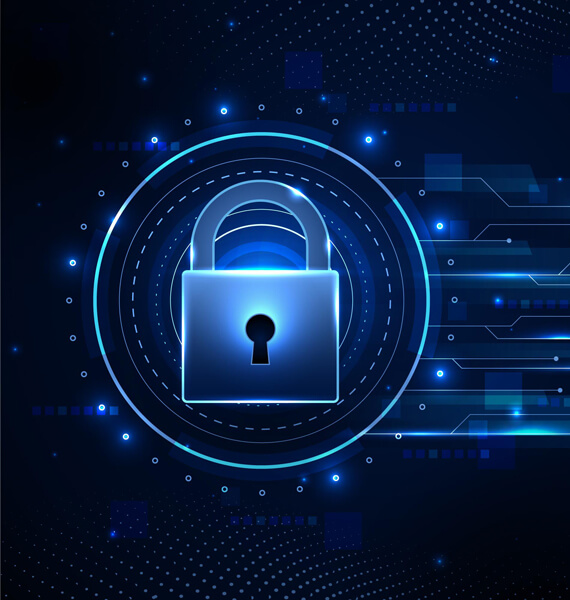
Step-by-Step Process To Apply For Class 3 DSC With USB Token In India
In today’s digital world, secure online authentication has become essential for businesses, professionals, and individuals dealing with government portals, e-tendering, and income tax filing. This is where a Class 3 DSC (Digital Signature Certificate) comes in — the highest level of digital signature available in India, offering advanced security and identity verification.
If you’re wondering how to apply for a Class 3 DSC with a USB token in India, this comprehensive guide will walk you through every step of the process — from eligibility and documentation to activation and usage.
What Is a Class 3 DSC?
A Class 3 DSC, or Class 3 Digital Signature Certificate, is an upgraded, highly secure digital signature used for online authentication, particularly in e-tendering, GST filing, ITR filing, and other official transactions.
Issued by licensed Certifying Authorities (CAs) such as eMudhra, Capricorn, Sify, and Vsign, it ensures both authentication and encryption, making your digital interactions legally valid and tamper-proof under the Information Technology Act, 2000. In short, a Class 3 DSC serves as your electronic identity for secure transactions, equivalent to your handwritten signature in the digital space.
Why Do You Need a Class 3 DSC?
There are multiple reasons why individuals and organizations must obtain a Class 3 DSC in India:
- E-Tendering: Essential for government vendors and contractors submitting bids online.
- Company Filings: Required for directors and authorized signatories on MCA, ROC, and GST portals.
- Income Tax Returns (ITR): Mandatory for companies and optional (but secure) for individuals.
- EPFO, DGFT, and Trademark Registration: Ensures authentication of official documents.
- Secure Digital Transactions: Offers maximum data integrity and non-repudiation.
In essence, if you’re involved in online documentation or government transactions, a Class 3 DSC ensures safety, efficiency, and legal compliance.
Step-by-Step Process to Apply for Class 3 DSC with USB Token in India
Here’s a detailed breakdown of how to apply for and activate your Class 3 DSC seamlessly.
Step 1: Choose a Licensed Certifying Authority (CA)
Begin by selecting a trusted and licensed Digital Signature Provider in India, such as:
- eMudhra
- Capricorn CA
- Sify Technologies
- Vsign
- IDSign
These providers are authorized by the Controller of Certifying Authorities (CCA), Government of India, to issue Class 3 DSCs. Always apply through an official or verified partner website to avoid fraudulent vendors.
Step 2: Select the Type and Validity of Your DSC
Depending on your usage, you can choose from two types of Class 3 DSCs:
- Individual DSC: For personal use, e-filing, or tender submission.
- Organization DSC: For business entities or corporate use.
Next, select the validity period — 1 year, 2 years, or 3 years. Most users prefer the 2-year option for cost-effectiveness.
Step 3: Gather the Required Documents
You’ll need the following documents to apply for a Class 3 DSC:
- Proof of Identity: PAN Card or Passport
- Proof of Address: Aadhaar Card, Voter ID, or Utility Bill
- Passport-size Photograph
- Email ID and Mobile Number (linked with Aadhaar)
For Organization DSCs, additional documents like a company’s PAN, GST certificate, and authorization letter are required.
Step 4: Fill Out the Online Application Form
Visit your chosen Certifying Authority’s website and complete the online application form.
You’ll be asked to provide:
- Applicant’s full name
- Contact information
- Type of certificate (Individual/Organization)
- Class type (Class 3)
- Validity period
After submission, you’ll receive an Application Reference Number (ARN) for tracking your DSC status.
Step 5: Complete Aadhaar-Based eKYC Verification
Verification is a critical part of the Class 3 DSC application process. Most authorities now use Aadhaar-based eKYC for instant validation. There are three ways to verify your identity:
- Online Paperless eKYC: Using Aadhaar OTP verification.
- Video KYC: A short live video recording to confirm your identity.
- Physical Verification: Applicable only in rare cases or offline applications.
Once verification is successful, your application moves to the issuance stage.
Step 6: Make the Payment
After verification, you’ll be directed to make payment for your Class 3 DSC. Pricing varies slightly depending on:
- Certifying Authority
- Type (Individual/Organization)
- Validity (1–3 years)
Typically, costs range between ₹1,000 – ₹2,500, including the USB token.
Step 7: Receive Your USB Token
Once approved, your Class 3 DSC will be securely stored in a USB token — a cryptographic device that ensures no one else can access or misuse your signature. The token (like ePass2003 or WatchData) will be delivered to your address or handed over digitally by the issuing authority.
Step 8: Install and Use the Class 3 DSC
To start using your Class 3 DSC, follow these steps:
- Plug the USB token into your computer.
- Install the driver software provided by the CA.
- Access portals such as MCA, DGFT, or eProcurement sites.
- Select your DSC from the drop-down menu when signing or submitting files.
Your digital signature is now active and ready for use in official transactions.
Tips for Safe and Efficient Use of Class 3 DSC
- Always keep your USB token safe and unplug it after use.
- Never share your password or DSC credentials.
- Renew your DSC at least 15 days before expiry to avoid disruptions.
- Use official websites for updates and verification.
- Install anti-virus software for secure usage on public networks.
Troubleshooting Common DSC Issues
Problem: DSC not detected
Solution: Reinstall drivers or try a different USB port.
Problem: Certificate expired
Solution: Renew online before expiry through the same provider.
Problem: Invalid signature error
Solution: Check that the correct certificate is selected and the document format is compatible.
Final Thoughts
Applying for a Class 3 DSC with a USB token in India is simple, secure, and essential for anyone engaging in digital transactions, government contracts, or online business compliance.
With growing digitization, having a valid Class 3 DSC is no longer optional — it’s a professional necessity that ensures trust, legality, and security in every digital signature you make. So, choose a licensed provider, follow the verification steps carefully, and enjoy seamless, paperless authentication across India’s digital landscape.
Frequently Asked Questions
1. What is the validity period of a Class 3 DSC?
A Class 3 DSC is usually valid for 1 to 3 years, depending on the option you select during purchase.
2. Can I use one Class 3 DSC for multiple government portals?
Yes, you can use the same DSC across portals like MCA, GST, DGFT, and Income Tax, as long as it’s linked to your registered credentials.
3. How long does it take to get a Class 3 DSC?
With Aadhaar-based eKYC, you can get it issued within 15–30 minutes after successful verification.
4. Is a USB token mandatory for Class 3 DSC?
Yes, the USB token securely stores your digital signature and prevents unauthorized use.
5. Can I renew my Class 3 DSC online?
Absolutely. You can renew it online through the same Certifying Authority before expiry.
6. What happens if I lose my USB token?
You must immediately inform your CA to revoke the certificate and apply for a reissue to prevent misuse.
